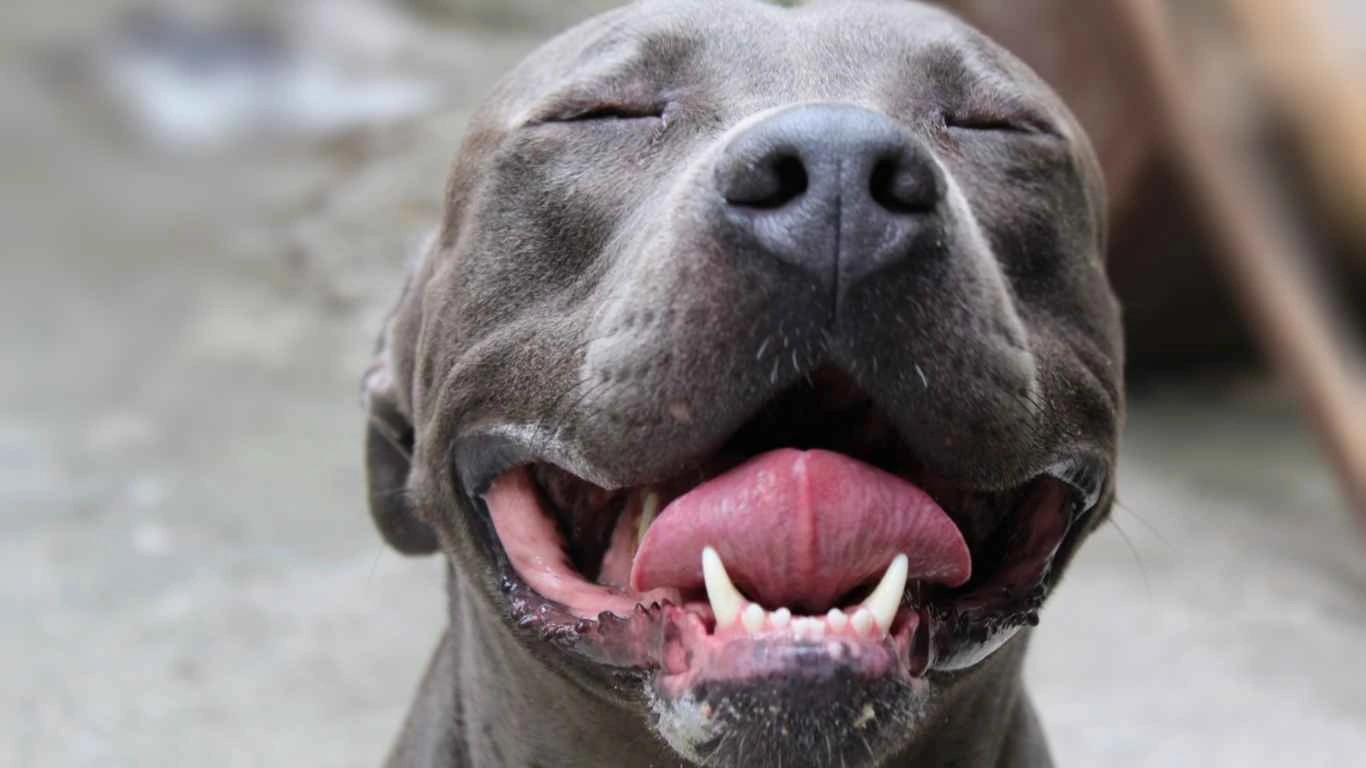Top Hypoallergenic Diets for Dogs That Finally Stop the Itching
Ever had a pup that just won’t stop itching, no matter how many baths or vet visits you go through? Trust me, I’ve been there—more times than I can count. Working as an Animal Care Specialist in both shelters and pet clinics, I’ve seen the struggle dog parents go through when their furry friend has food sensitivities. The best hypoallergenic diets for dogs aren’t just a trend—they’re a lifeline for so many itchy, uncomfortable pups. If you’ve got a dog that’s constantly scratching, breaking out in rashes, or suffering from tummy troubles, this is exactly where you need to be.
What Exactly Is a Hypoallergenic Diet for Dogs?

A hypoallergenic diet is specially formulated to avoid ingredients that commonly trigger allergic reactions in dogs. These reactions can be caused by anything from common proteins like beef or chicken to grains like corn and wheat. It doesn’t mean the food is completely free of allergens, but rather that it uses ingredients less likely to cause problems.
In my time working with rescue dogs, especially those coming in with unknown medical histories, switching to a hypoallergenic formula has often made all the difference. Within a week or two, you’ll see their skin clearing up, energy levels bouncing back, and those miserable rashes start to fade. It’s like watching a whole new dog emerge.
How to Know If Your Dog Needs a Hypoallergenic Diet

Common Symptoms of Food Allergies in Dogs
Food allergies in dogs are sneaky. They don’t always show up as hives or vomiting—sometimes, they just itch and scratch nonstop. Here are some of the most frequent signs I’ve seen in clinic patients:
- Chronic ear infections
- Itchy skin, especially paws and face
- Hair loss or hot spots
- Red, inflamed skin
- Diarrhea or chronic gas
- Vomiting
If you’re noticing any of these, especially after mealtimes or a change in food, there’s a good chance your dog’s diet is the culprit.
Top Ingredients to Avoid in Non-Hypoallergenic Diets

The Biggest Offenders
Here’s a quick list of ingredients that I often see flagged when dogs have food sensitivities. If your pup is struggling, check the label on their kibble or canned food:
- Beef: One of the most common protein allergens for dogs.
- Chicken: Surprisingly problematic for many dogs.
- Dairy: Some dogs are lactose intolerant, just like us!
- Wheat: A filler in many commercial dog foods and a frequent allergen.
- Corn: Cheap and common, but can be a digestive nightmare.
- Soy: Another common filler that can cause upset stomachs and itchy skin.
I remember this one senior Lab named Boomer at the shelter—his coat was dull, and he scratched until his skin was raw. We switched him to a salmon and sweet potato hypoallergenic blend, and within two weeks, it was like he aged backward. His coat got shiny again, and the incessant itching stopped. The change was dramatic—and honestly, kind of emotional to watch.
Veterinary Insight: Are Hypoallergenic Diets Always Necessary?
What the Vets Say
Most veterinarians recommend an elimination diet before settling on a specific hypoallergenic formula. This means feeding your dog a very basic diet—usually one novel protein and one simple carb—for 8 to 12 weeks to pinpoint the allergen. I’ve sat in on dozens of these consultations, and while it takes patience, it’s one of the most effective ways to diagnose food allergies.
Important tip: During an elimination trial, absolutely no treats, no table scraps, and no flavored medications. This is where many pet parents slip up without even realizing it.
Best Hypoallergenic Diets for Dogs: My Go-To Picks

Alright, now let’s dig into the juicy part—what actually works. I’ve tested out countless diets over the years, from prescription options to grain-free formulas, and while there’s no one-size-fits-all answer, a few stand out time and again. Whether your dog has full-blown allergies or just sensitive digestion, these picks tend to get tails wagging and skin soothed.
1. Limited Ingredient Diets (LID)
These are often the first step for dogs with food issues. LID formulas use one novel protein and one carbohydrate, which makes it easier to pinpoint what’s triggering a reaction. I’ve had great success recommending options like:
- Venison & Sweet Potato – Gentle, tasty, and rarely causes issues.
- Duck & Pea – Another novel combo that works well, especially for skin sensitivities.
- Salmon & Brown Rice – Packed with Omega-3s for coat health and joint support.
One of our patients, a Border Collie mix named Luna, was miserable on regular kibble—constant ear infections and red paws. We switched her to a salmon-based LID and boom—within a month, her symptoms had all but disappeared.
2. Hydrolyzed Protein Diets
This one’s a bit more science-y. Hydrolyzed diets break proteins down into such tiny pieces that your dog’s immune system doesn’t recognize them as allergens. These diets are usually vet-prescribed and can be life-changing for dogs with severe food allergies.
I remember this little Frenchie, Milo, who came in with chronic hives. Nothing worked—until we got him on a hydrolyzed protein formula. It took some convincing (and a prescription), but it was the only thing that truly cleared up his skin long-term.
3. Fresh or Raw Hypoallergenic Options
If you’re up for a bit more prep or have a budget that allows it, fresh-cooked or raw diets can be customized to avoid allergens completely. You can choose the exact protein and carb sources, and many delivery services now offer vet-formulated hypoallergenic options.
Just a heads up: always consult with your vet or a certified canine nutritionist before switching to raw. It’s not for every pup, but when done right, it can do wonders.
Transitioning Your Dog to a Hypoallergenic Diet (Without the Drama)

Slow and Steady Wins the Race
I can’t stress this enough—don’t switch your dog’s food overnight. A sudden change can cause stomach upset even if the new food is technically “better.” Here’s how I guide pet parents through the transition process:
- Start with 75% of their old food and 25% new food for 3 days.
- Then go 50/50 for the next 3 days.
- Move to 25% old, 75% new for another 3 days.
- Finally, 100% new food—if there are no issues.
This method has helped avoid a lot of digestive drama in the clinic. Some dogs need even slower transitions—especially older or sensitive ones. And trust me, it’s worth the extra time to keep your carpet clean and your pup feeling good.
Don’t Forget About Treats and Toppers!

One of the biggest mistakes I see? People go all-in on hypoallergenic dog food, but then hand over whatever treats they have in the cupboard. Unfortunately, that defeats the whole purpose. Those tiny biscuits can be loaded with hidden allergens like chicken fat or dairy.
Safe Hypoallergenic Treat Ideas:
- Freeze-dried single-ingredient meats (like lamb liver or rabbit)
- Sweet potato chews (homemade or store-bought)
- Dehydrated fish skins (yes, they smell, but dogs go wild for them!)
I even had one client who made her own treats with a food dehydrator—just thin slices of zucchini or banana, low-temp baked for a few hours. Not only were they allergy-safe, but her pup absolutely loved them. Bonus: super budget-friendly too.
How to Read Labels Like a Pro
What to Look For—and What to Skip
Understanding ingredient labels is kind of like decoding a mystery novel. Here’s what I always tell folks to focus on when they’re in the pet food aisle or scrolling through online listings:
- Named Protein First: Look for a clear source like “duck” or “lamb,” not vague terms like “meat meal.”
- Short Ingredient Lists: Fewer ingredients = less chance of triggering an allergy.
- No Fillers: Avoid corn, soy, and artificial flavors or dyes.
- Added Omegas: Omega-3 fatty acids are great for skin health and inflammation control.
Label confusion is real, and unfortunately, marketing doesn’t always mean quality. I always suggest looking for brands that have undergone AAFCO feeding trials—this tells you the diet was actually tested on real dogs, not just formulated on paper.
How Long Until You See Results on a Hypoallergenic Diet?

Now for the million-dollar question: how long does it take before you actually see a difference after switching to one of the best hypoallergenic diets for dogs? Honestly, it varies from pup to pup, but most of the dogs I’ve worked with start showing improvement within 4 to 6 weeks. Some changes—like less itching or better digestion—can be noticeable as early as two weeks in.
If you’ve got a dog with chronic symptoms, it might take longer for the body to detox from allergens and fully heal. I had a Cocker Spaniel named Daisy that took nearly two full months before her red, inflamed ears finally stayed clear. It was a bit of a rollercoaster, but staying the course really paid off. Her energy came back, and so did her sparkle. Literally—her coat started gleaming again!
Signs the Diet Is Working
- Reduced scratching and licking
- More regular, firmer poops (yes, poop talk is normal here!)
- Improved skin and coat condition
- Fewer ear infections or hot spots
- Better mood and energy levels
Patience is key here. I always tell pet parents not to give up too soon—especially if you’ve committed to an elimination diet or trying a hydrolyzed formula. Let your vet guide the timeline, and be sure to track symptoms in a notebook or on your phone. It makes those little wins easier to spot.
Other Things That Can Mimic Food Allergies

Here’s the thing I’ve learned through experience: not every itchy dog has a food allergy. Sometimes it’s something completely different, and misdiagnosing it can waste both time and money. I’ve seen pups switched through four different foods, only to find out the culprit was seasonal allergies or even mites.
Common “Look-Alike” Conditions
- Environmental allergies: Grass, dust mites, pollen—just like us humans.
- Flea allergy dermatitis: One bite is enough to cause a massive reaction in sensitive dogs.
- Yeast or bacterial skin infections: These often pop up secondary to allergies but need targeted treatment.
- Mange or mites: Can mimic food allergy symptoms and require vet-prescribed treatment.
This is why I always recommend getting a vet diagnosis before going full-speed into food trials. A skin scraping, allergy panel, or even a detailed history can save you weeks of trial-and-error frustration.
Working With Your Vet and Building a Long-Term Plan
While I’ve got tons of hands-on experience, there’s no replacing the partnership between a great vet and a committed pet parent. Hypoallergenic diets should be part of a bigger plan to support your dog’s health, not the only fix. Your vet may also suggest supplements like probiotics, omega oils, or medications to help during flare-ups.
Vet-Approved Supportive Additions
- Fish oil: Helps reduce inflammation and supports healthy skin
- Probiotics: Balances gut flora and aids digestion
- Allergy meds: Short-term relief for serious flare-ups
When I worked with a senior Boxer named Moose (sweetest guy ever), his diet helped reduce symptoms, but we still needed a mix of regular medicated baths and probiotics to fully keep his skin issues at bay. It’s about balance and a personalized plan—just like people, no two dogs are the same.
Final Thoughts on Finding the Best Hypoallergenic Diets for Dogs
Dealing with dog allergies isn’t always straightforward, but the right food can change your pup’s life—and yours too. The transformation I’ve seen in dogs after switching to a hypoallergenic diet is nothing short of amazing. Less scratching, better energy, healthier poop (yes, that again), and just overall happiness.
My advice? Trust your gut, work closely with your vet, and don’t settle for the first bag of “grain-free” food that looks fancy. Take time to read labels, learn your dog’s triggers, and be patient with the process. Your dog can’t speak up, but with a little effort, you’ll be able to hear their “thank you” loud and clear—in tail wags, of course.
References
- American Veterinary Medical Association (AVMA)
- American Animal Hospital Association (AAHA)
- PetMD
- VCA Animal Hospitals
- ASPCA
Disclaimer
This article is based on my personal experiences as an Animal Care Specialist and is intended for informational purposes only. It should not be used as a substitute for professional veterinary advice, diagnosis, or treatment. Always consult your veterinarian before making changes to your dog’s diet or health care routine.





